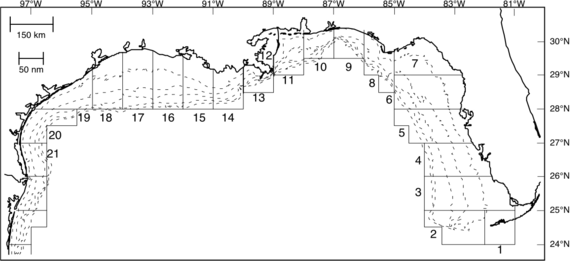
NOAA Fisheries announces an increase in the allowable amount of commercial shrimp trawl fishing effort in certain federal waters of the northern Gulf of Mexico.
The increased allowable effort represents a relative maximum increase in Gulf-wide shrimp fishing effort of 21 percent. However, there is no expectation this action would result in a significant increase in effort.
The maximum possible increased shrimp fishing effort is unlikely to alter the red snapper rebuilding schedule and have little effect on future red snapper allowable catch due to increased bycatch of juvenile red snapper.
The final rule will also revise the Gulf of Mexico shrimp fishery management plan framework procedure to allow changes to allowable fishing effort through an expedited process.
WHEN RULE WILL TAKE EFFECT:
- Regulations will be effective March 9, 2020
This bulletin serves as a Small Entity Compliance Guide, complying with section 212 of the Small Business Regulatory Enforcement Fairness Act of 1996.
Frequently Asked Questions
Why does the Gulf of Mexico shrimp fishery have a cap on allowable effort?
- In 2005, a population assessment identified bycatch of red snapper by the Gulf of Mexico shrimp fishery as a primary factor affecting the recovery of Gulf of Mexico red snapper.
- The Gulf of Mexico Fishery Management Council instituted a reduction in shrimp fishing effort in statistical zones 10-21 (map below) from 10-30 fathom water depths to help end overfishing (i.e., harvesting more fish than is sustainable) of red snapper and rebuild the population.
Why did the Gulf of Mexico Fishery Management Council change the allowable fishing effort for the Gulf of Mexico shrimp fishery?
- The Gulf of Mexico red snapper population has improved and is rebuilding consistent with the rebuilding plan.
- A recent analysis by the NOAA Fisheries Southeast Fisheries Science Center indicated that increasing shrimp trawling effort in areas monitored for juvenile red snapper bycatch is unlikely to affect the rebuilding timeline of red snapper, and would have little impact on yearly red snapper annual catch limit projections.
- The Gulf of Mexico Fishery Management Council wanted to allow the Gulf of Mexico shrimp fishery to also experience some of the positive impacts of the improving red snapper population.

What impact will changing the allowable shrimp fishing effort have on red snapper?
- The NOAA Fisheries analysis concluded that red snapper mortality due to discards during the closed red snapper recreational season is much higher than was thought at the time the shrimp effort reduction was put in place, and the natural mortality values in previous assessments assumed for juvenile red snapper have changed. Therefore, mortality due to shrimp trawl bycatch has a smaller influence on the red snapper population than previously thought.
- The analysis also found that an increase in shrimp fishing effort would reduce the red snapper acceptable biological catch levels in the short term (next 3 years) by no more than 100,000 pounds and, in the long term, by no more than 200,000 pounds.
- For the recreational private angling component, the greatest possible catch reduction would be less than 1 percent of the Gulf of Mexico’s overall private-angling component quota. This maximum possible private angling catch reduction equates to less than a single day of fishing and thus, it is not expected to affect the private recreational fishing season length.
What does this mean for the Gulf of Mexico shrimp fishery?
- To date, the Gulf of Mexico shrimp fishery has not exceeded the allowable effort level in the area monitored for juvenile red snapper since the implementation of the effort reduction, though it did come within two percentage points in 2014, 2016, and 2017.
- The final rule will allow Gulf of Mexico commercial shrimp fishermen to trawl in statistical zones 10-21 of the northern Gulf in 10-30 fathom water depths for about an additional 5,800 24-hour days. This represents a relative increase in Gulf-wide effort of 21 percent.
- The number of federally permitted Gulf of Mexico shrimp vessels has been declining since the implementation of a permit moratorium in 2006 because of non-renewal. There is no expectation this action would result in a significant increase in effort in that area.
- Changing the allowable effort threshold will decrease the potential for time-area closure in the area.
Where can I find more information on Amendment 18?
- Amendment 18 may be found online at the NOAA Fisheries Southeast Regional Office Website: https://www.fisheries.noaa.gov/action/amendment-18-modifying-shrimp-effort-threshold.
- Contact NOAA Fisheries, Southeast Regional Office



